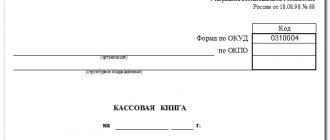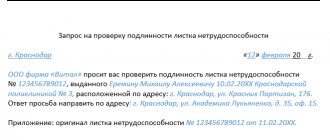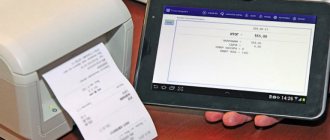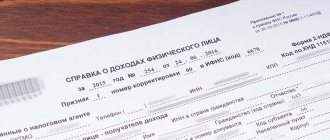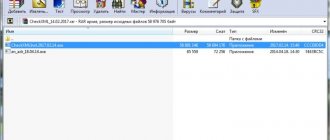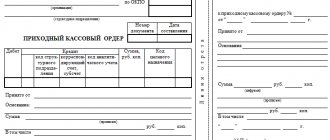Making changes in the current tax period
The procedure for making changes to the purchase book is regulated by the Decree of the Government of the Russian Federation “On the forms and rules for filling out (maintaining) documents used in calculations of value added tax” dated December 26, 2011 No. 1137 (hereinafter referred to as the Rules).
If you make changes before the end of the tax period, then in the purchase book:
- cancel the erroneous invoice (adjustment invoice) - write it down in the purchase book with negative cost values;
- then register the corrected (corrected adjustment) invoice with positive correct values (clause 9 of Appendix 4 to the Rules).
Thus, to correct errors in the sales book in the current quarter, you do not need to draw up an additional sheet - correct erroneous entries directly in the purchase book.
This method of making adjustments has not previously been denied by tax authorities. We informed you about this on our website: see details here.
Why should a seller or buyer cancel invoices and how to do it correctly, find out here.
Accounting for received invoices in 1C
Registration occurs in a similar way to sales, only here you select the “Purchases” menu, the “Receipts (acts, invoices)” section, where through “Receipts” you select the appropriate form, for example, “Receipt of goods: Invoice”.
- The header contains information about the number and date of the incoming invoice, the name of the counterparty, the agreement and the invoice.
- The warehouse where the inventory items are stored is selected.
- A check mark is placed if the original was received by the organization.
- The form table is filled in using the “Select”, “Add” or “Add by barcode” keys.
If the organization previously received an invoice, then you can enter information in the table automatically. Simply select the account in the field of the same name. After filling out, the “Invoice” line appears under the table, where you should enter the number and date of the act received from the supplier. Then click “Register”.
Below, the line “Invite to exchange electronic documents” is highlighted, clicking on which allows you to perform the same operation.
When you click on the line with the SF, the form itself opens, which you can print. It contains tax information.
By clicking on “DtKt”, information about the transactions opens, where you can see that VAT has been taken into account, and the “VAT Purchases” tab reflects the event about the presentation of VAT for deduction. Accordingly, the entry will be reflected in the CP.
Next, we will consider the nuances of registration when the supplier makes changes to the issued invoices, as well as actions with partial payments.
Making changes at the end of the tax period
If you need to correct errors in the purchase book for an already ended quarter:
- draw up an additional sheet of the purchase book for the tax period in which the invoice requiring correction was registered (clause 4 of Appendix 4 to the Rules);
- submit an updated VAT return, pay additional tax and penalties if, as a result of errors in the purchase book, the amount of the tax deduction turned out to be overstated (Clause 1, Article 1 of the Tax Code of the Russian Federation).
The updated version of the Rules for maintaining an additional list for the purchase book has established a beneficial option for taxpayers for reflecting changes: the corrected invoice can be registered in the period when the primary invoice was received. In clause 6 of the Rules for maintaining an additional list for the purchase book, an algorithm for calculating the indicator using the “Total” line is now prescribed:
TOTAL0 = TOTAL0 – ASF + ISF
where: TOTAL0 is the indicator of the “Total” line of the additional list of the purchase book for the tax period in which the invoice was registered before corrections were made to it;
TOTAL0 — indicator of the “Total” line;
ASF - indicators of invoices subject to cancellation;
ISF - indicators of registered invoices (including adjustment ones) with corrections made to them.
Find out how to distinguish a corrected invoice from an adjustment one from the materials:
- “What is an adjustment invoice and when is it needed?”;
- “When is a corrected invoice used?”.
EXPLANATIONS from ConsultantPlus: In the fourth quarter of 2019, when purchasing fruit under an import contract, a VAT deduction was declared in the purchase book on the goods declaration at a rate of 20%. In May 2021, a decision was received from the customs authority to make changes and (or) additions to the information specified in the goods declaration at a rate of 10% for this transaction due to changes in legislation establishing the VAT rate on fruit from October 1, 2019 The decision was formalized by the customs authority. How should this be reflected in the purchase ledger? If you do not have access to the K+ system, get a trial online access for free.
Accounting for VAT on advances to the supplier
With partial payments paid and returned to the counterparty in 1C, the situation is similar to that given in the section on advances to the buyer, only now the company plays the opposite role. Accordingly, first payment is made based on the issued invoice. This operation is formalized with the documents “Invoice from the supplier” and after filling out, using the “Create on the basis” button, a “Payment order” is generated.
You can also call a payment order (PP) yourself from the “Bank and Cash Desk” menu.
The PP indicates the amount of the advance and VAT on it. The PP is carried out and closed with the button of the same name. Based on the PP, by right-clicking on it in the list, you can select “Write-off from the current account”, thanks to which transactions for writing off funds will be reflected. And according to the “Invoice received” entered on its basis, the amount of tax will be reflected in the CP. You can see this reflection by clicking on the SF “DtKt” and selecting the “VAT Purchases” tab.
If for some reason the contract is terminated, then the return of the advance from the supplier is processed as follows.
In the “Bank and cash desk” menu (section “Bank statements”), select the operation “Receipt to the current account”. In addition to the information fields, the document contains the “Type of transaction” - “Return from supplier”.
Direct restoration of VAT, which was accepted for accounting from the paid advance, must be done through the “Operations” menu and the “Period Closing” section, go to “Routine VAT operations”.
Next, select a date and click the “Fill” button. The sign will reflect the action to restore VAT on advances. You can check the correctness of the reflection by clicking “DtKt”, as a result of which on the VAT Sales tab you will see that the tax on the returned advance has been restored.
The SF must be carried out and closed with the button of the same name.
Form of an additional sheet of the purchase book and rules for filling it out
The form of the additional sheet of the purchase book and the rules for filling it out are established in Appendix 4 to the Decree of the Government of the Russian Federation dated December 26, 2011 No. 1137.
Additional sheets of the purchase book are an integral part of the purchase book.
The procedure for preparing an additional sheet for the purchase book:
- Transfer the final data to the “Total” line (clause 2 of the Rules for filling out an additional sheet of the purchase book):
- from column 16 of the purchase book for the tax period in which the erroneous invoice was registered (including an adjustment one), if additional sheets for this purchase book were not issued;
- from column 16 of the last completed additional sheet of the purchase book for the tax period in which an erroneous invoice (including an adjustment) was registered, if there are already additional sheets for this purchase book.
- On the line in columns 1 to 16, write down the indicators of the canceled erroneous invoice (adjustment invoice), while the indicators in columns 15 and 16 are reflected with a negative value (clauses 3, 5 of the Rules for filling out an additional sheet of the purchase book ). When canceling an entry on an advance invoice, columns 8 and 13 of the additional sheet are not filled in (clause 4 of the Rules for filling out an additional sheet of the purchase book).
- In the “Total” line, summarize the results in column 16 (from the indicators in the “Total” line, subtract the indicators of the records of the erroneous invoice (adjustment invoice) and to the obtained result, add the indicators of registered invoices (including adjustment ones) with those included in them corrections) (clause 6 of the Rules for filling out an additional sheet of the purchase book).
The indicators in the “Total” line are used to make changes to tax reporting previously submitted to the tax authority (clause 1, article 81 of the Tax Code of the Russian Federation, clause 6 of the Rules for filling out an additional sheet of the purchase book).
Example of designing an additional sheet of a purchase book
An example will help you understand how to fill out an additional sheet for the purchase book.
Example
In March 2021, Mechta LLC shipped products worth RUB 368,000 to PJSC Fantasia. (including VAT = 61,333.33 rubles). Moreover, in the invoice the total cost was erroneously indicated in the amount of 386,000 rubles. (including VAT = 64,333.33 rubles).
The error was noticed after the end of the quarter and the submission of the VAT return for the 1st quarter.
07/08/2019 Fantasia LLC received a corrected invoice from PJSC Mechta. On the same day, the accountant of PJSC Fantasia prepared an additional sheet for the purchase book for the 1st quarter of 2021, in which:
Then the accountant of PJSC Fantasia filed an updated VAT return for the 1st quarter of 2021, paid additional tax and penalties - as a result of an error, the declared deduction was overstated by 3,000 rubles. (64,333.33 – 61,333.33).
How the accountant of PJSC Fantasia prepared the additional sheet, see the sample.
Reflection of buyer's advance payment in 1C
Previously, the issue of accounting for VAT on advances was raised. Note that in commercial practice there are various options for advance payments, each of which has its own characteristics. Here we will talk directly about advances. The topic of deposits, security payments or guarantee fees is not discussed in this article.
The advance itself represents a partial payment under the contract. Accordingly, if contractual obligations cannot be fulfilled, then such payment must be returned. Moreover, all events in the system have already been reflected.
The entire process of making a partial payment and returning it is discussed in this section.
To reflect the receipt of an advance from the buyer in accounting, the accountant first issues an invoice to the buyer. On the one hand, an invoice is not a mandatory document, on the other hand, it significantly facilitates the task of interacting with the counterparty as part of the delivery. After all, it lists all positions, highlights the total amount and tax, and indicates the details of the parties.
To do this, in the “Sales” menu, select the “Accounts to Customers” section and fill in all the necessary fields in the window that opens, indicating the agreement concluded by the counterparties.
Receipt of partial payment can be processed directly from the Account - click “Create based on” - “Receipts to current account”.
You can also use the “Bank and Cash Desk” menu in the “Bank Statements” section and enter data using the “Receipt” button.
Usually the invoice indicates the due date for its payment, most often it is 3-5 days from the date of issue.
It should be noted that according to the law, amounts not credited within 5 k.d. advances, it is necessary to write out the SF for the advance. Therefore, you should carefully monitor the receipt of money and issue SF in a timely manner.
You can do this in one of the following ways:
- inside the document “Receipt to current account”, click on “Create based on” and select “Invoice issued”;
- in the “Bank and Cash Office” menu, select the “Registration of advance invoices” section, set the date or period and click the “Fill” button.
Any of these methods will allow you to issue a SF for an advance. The difference from the SF for full payment will be the “Operation Code” - 2, indicating that this SF is issued for an advance payment.
In general, it is recommended, even when automatically creating an invoice, to check the correctness of the entered information, codes, and amounts.
Results
Correct erroneous entries in the purchase book differently depending on whether the quarter has ended or not. Within the quarter, make corrective entries in the purchase book itself (first cancel erroneous data by reflecting them with a minus sign, then register correct data with positive values).
If the quarter has already ended and the declaration has been sent to the tax authorities, correct the purchase book using an additional sheet to the purchase book in which the primary invoice is registered.
The procedure for filling it out is described in Resolution No. 1137. You can find more complete information on the topic in ConsultantPlus. Free trial access to the system for 2 days.
